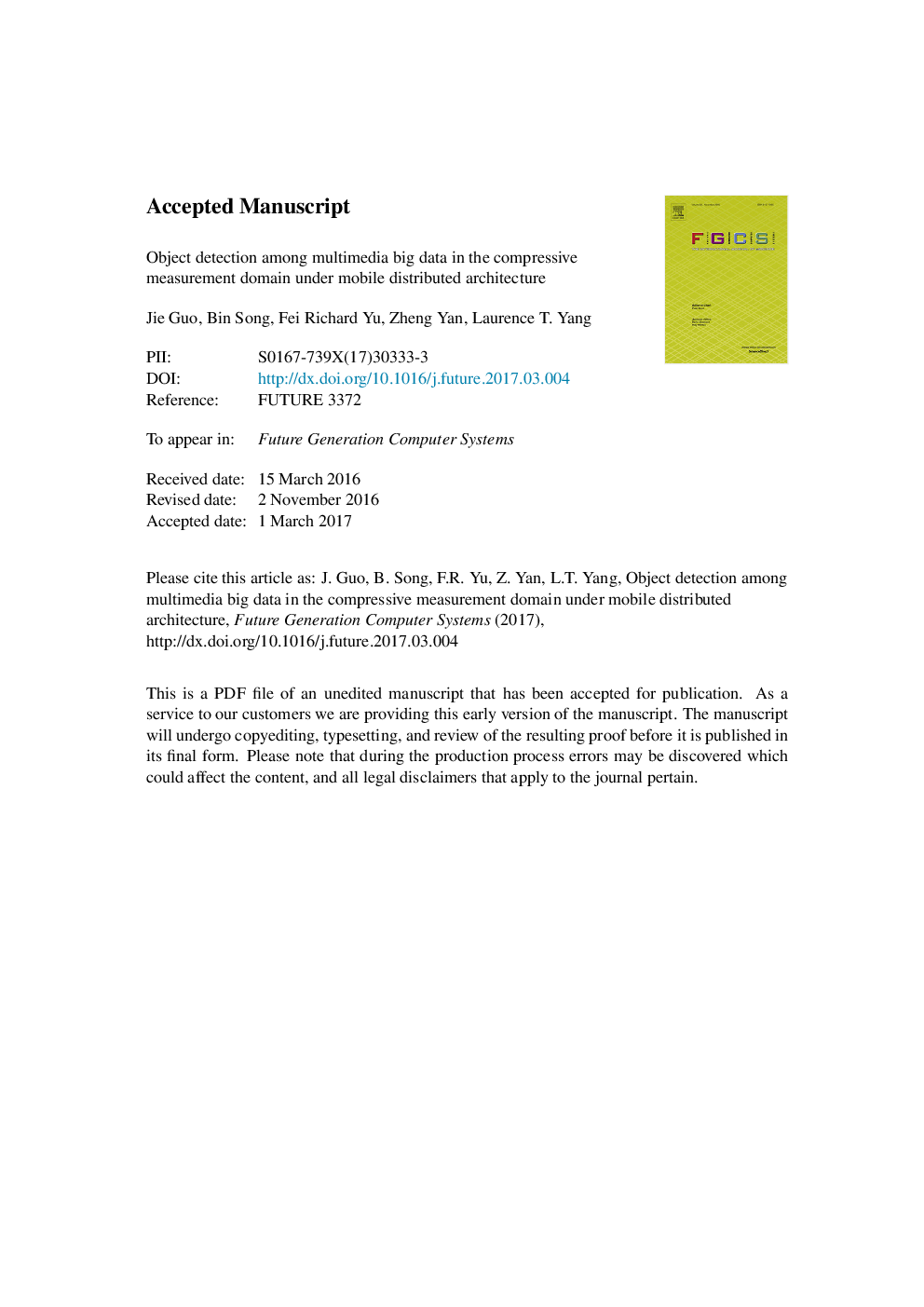| Article ID | Journal | Published Year | Pages | File Type |
|---|---|---|---|---|
| 4950342 | Future Generation Computer Systems | 2017 | 32 Pages |
Abstract
Multimedia big data is difficult to handle because of its enormous amount and the elusive property of underlying information. To study how to explore valuable information among multimedia big data with low complexity, this paper proposes an object detection method of big data, which is in compressive measurement domain under a mobile distributed computing architecture. It includes the sparse representation and object detection processes. Considering the unbalanced computation capacity between a mobile center cloud and mobile edge sites, we shift large storage burden into the cloud, while performing the dictionary learning by using compressive measurements in the mobile edge sites. Specifically, after getting the measurements at the edge sites, we perform dictionary learning to obtain the sparse representation in pixel domain, then select significant images and their feature vectors to be stored in the center cloud. In addition, we also analyze the trained dictionary in the measurement domain employing measurements. In order to reveal the two kinds of dictionaries' relationship, we conduct a formulation process into each of them and find that the relationship depends on the uniqueness relation between the original signal and the sparse coefficient in the measurement domain. At the same time, we keep coefficients for a certain time period at the mobile edge sites in order to realize real time object detection, taking the advantage of low latency of the mobile edge computing ends. Since the sparse coefficients and the original signal have a one-to-one correspondence relationship, we can just search for the matched coefficients of the image block for detecting object. Experimental results show that Hadamard measurement matrix can better preserve the characteristics of the original signal than Gaussian matrix and that the proposed method can achieve a favorable detection performance. Meanwhile, the computation cost and storage cost of the proposed detection process can be significantly reduced compared with traditional methods, which is suitable for the multimedia big data. This can also be used in smart cities for looking for lost children and other specific events.
Keywords
Related Topics
Physical Sciences and Engineering
Computer Science
Computational Theory and Mathematics
Authors
Jie Guo, Bin Song, Fei Richard Yu, Zheng Yan, Laurence T. Yang,
